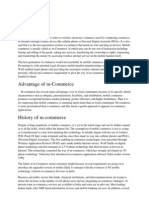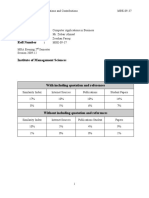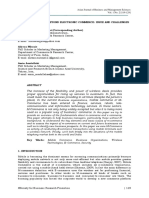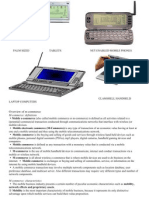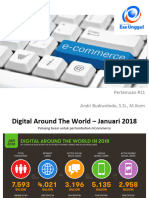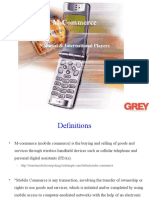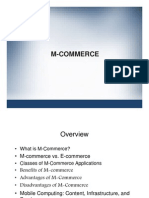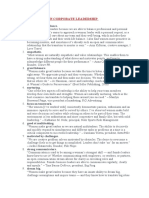0% found this document useful (0 votes)
117 views7 pagesPaper 16
This document discusses the history and current state of mobile commerce (m-commerce). It begins by defining m-commerce as the buying and selling of goods and services through wireless devices like phones and PDAs. It then provides details on the development of m-commerce technologies and applications over time, from the first mobile payment machines in 1997 to modern smartphone apps. The document also outlines several industries impacted by m-commerce and examples of m-commerce products and services available today like mobile ticketing, coupons, and content downloads to phones.
Uploaded by
tuonglaiganCopyright
© Attribution Non-Commercial (BY-NC)
We take content rights seriously. If you suspect this is your content, claim it here.
Available Formats
Download as PDF, TXT or read online on Scribd
0% found this document useful (0 votes)
117 views7 pagesPaper 16
This document discusses the history and current state of mobile commerce (m-commerce). It begins by defining m-commerce as the buying and selling of goods and services through wireless devices like phones and PDAs. It then provides details on the development of m-commerce technologies and applications over time, from the first mobile payment machines in 1997 to modern smartphone apps. The document also outlines several industries impacted by m-commerce and examples of m-commerce products and services available today like mobile ticketing, coupons, and content downloads to phones.
Uploaded by
tuonglaiganCopyright
© Attribution Non-Commercial (BY-NC)
We take content rights seriously. If you suspect this is your content, claim it here.
Available Formats
Download as PDF, TXT or read online on Scribd
/ 7





